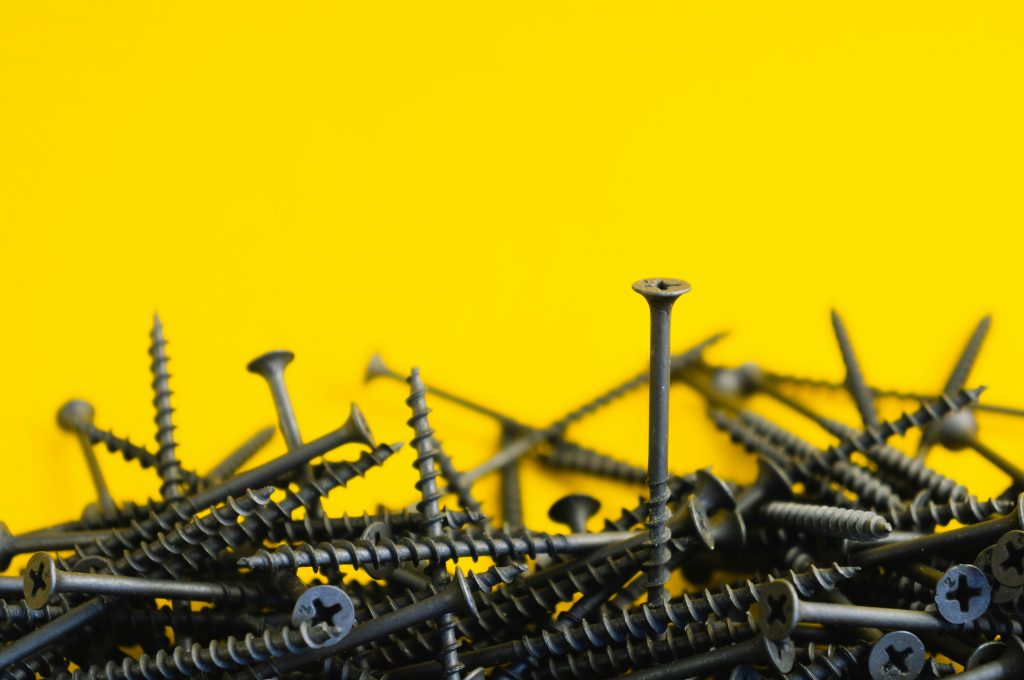caTEGORIES
Tags
Understanding Fasteners Consequences of Over-Tightening

Posted: July 18, 2024
Categories: News
Ensuring proper fastening is paramount across various industries as it guarantees the stability and integrity of structures, machinery, and equipment. Fasteners are essential components that serve to mechanically join or secure two or more objects together. When applied correctly, fastening methods contribute to the reliability and longevity of numerous applications. Conversely, improper fastening, especially over-tightening, can result in considerable issues. This article delves into the potential problems associated with over-tightening or under-tightening fasteners and their respective consequences.
Importance of Proper Fastening
Definition and Types of Fasteners
Fasteners are devices such as bolts, screws, and nuts that mechanically join two or more objects. They come in various types designed to suit different applications, including screws, nuts, bolts, rivets, and washers. Each type of fastener is engineered to provide specific strengths and holding capacities.
Common Applications in Various Industries
Fasteners are extensively utilized across many industries, including construction, automotive, aerospace, and manufacturing. They are essential for holding components together in machinery, vehicles, buildings, and electronic devices. The versatility and reliability of fasteners make them a cornerstone in engineering and industrial applications.
Benefits of Correct Fastening Techniques
Correct fastening techniques are critical for ensuring the structural integrity and safety of connected components. Proper fastening prevents loosening, vibration, and potential failures, thereby enhancing the longevity of the assembly. Correctly installed fasteners also facilitate easy disassembly and maintenance, reducing downtime and repair costs.
Potential Issues Resulting from Over-Tightening Fasteners
Structural Damage
Applying too much torque to fasteners can result in notable structural harm. When the torque applied surpasses the suggested limits, it may lead to the weakening and eventual breakdown of the material being secured. This compromises the entire stability and safety of the structure.
Reduced Load-Bearing Capacity
Over-tightened fasteners often suffer from reduced load-bearing capacity. When the fastener is excessively tightened, it can stretch beyond its elastic limit, leading to a permanent deformation. This mechanically fatigued state diminishes its ability to bear loads effectively, making the connection susceptible to failure under stress.
Material Deformation
Effects on Metals
Over-tightening fasteners can result in material deformation, particularly in metallic applications. Metals can experience stress fractures, warping, and cracking when significant forces are applied beyond their tensile strength. These deformations can impair the alignment and functionality of the entire assembly.
Effects on Non-Metallic Materials
Non-metallic materials, such as plastics and composites, are also vulnerable to damage from over-tightening. Excessive force can cause cracking, chipping, or even complete breakage of these materials. This not only compromises the immediate joint but can also lead to failure in the surrounding areas due to uneven stress distribution.
Consequences for Machinery and Equipment
Increased Wear and Tear
Excessively tightened fasteners can cause accelerated deterioration of machinery and equipment. The extra stress exerted by these over-tightened fasteners heightens the friction and strain on moving components, potentially resulting in early wear and operational failure.
Potential for Component Failure
Impact on Critical Components
Critical components of machinery and equipment are particularly at risk of failure due to over-tightening. When fasteners securing vital parts are excessively tightened, it can lead to misalignment, stress concentrations, and eventual fracture of the component. The critical nature of these parts means that their failure can have severe operational consequences.
Long-Term Maintenance Costs
The long-term maintenance costs associated with over-tightening fasteners can be substantial. The frequent repairs or replacements required to address the damages caused by over-tightening result in increased labor and material expenses. Additionally, operational downtime due to maintenance further exacerbates the financial impact.

QEWITCO FASTENERS CO., LTD
When examining the consequences of over-tightening fasteners, it is essential to consider the quality and reliability of the fasteners themselves. Qewitco Fasteners Co., Ltd. stands out as a premier supplier in this domain, offering a diverse range of high-quality fasteners and fixings that cater to various industrial needs.
Founded in 2004, Qewitco has persistently focused on producing and trading high-quality, reliable products. The company’s operational principles, which are deeply influenced by its former British owners and directors, have been crucial in managing the supply chain of industrial consumable goods from mainland China and neighboring countries such as Taiwan, Malaysia, Vietnam, and Thailand. This combination of Western business expertise and Far Eastern values enables Qewitco to provide outstanding products and services to its international customers.
Qewitco’s competitive product range includes fasteners of general grade, high grade, and those made from brass/copper, stainless steel, aluminum, and various alloys. The provision of test certificates, coupled with rigorous professional quality control and traceability, underscores the company’s unwavering commitment to excellence. This dedication to quality is paramount for preventing issues such as over-tightening, which can compromise the integrity and functionality of fasteners.
Proper fastening practices involve using the right techniques and high-quality fasteners to ensure the reliability and longevity of an assembly. Over-tightening fasteners can result in numerous adverse effects, including structural damage, reduced load-bearing capacity, and material deformation. For machinery and equipment, the implications include increased wear and tear, potential component failure, and higher long-term maintenance costs. Incorporating robust products from trusted suppliers like Qewitco Fasteners Co., Ltd. can significantly mitigate these risks and ensure the lasting performance of your assemblies.
Safety Concerns Related to Incorrect Tightening Practices
Risk of Accidents
One of the paramount safety concerns associated with incorrect tightening practices is the increased risk of accidents. When fasteners are not properly tightened, they can loosen over time due to vibrations and dynamic loads. This loosening can lead to catastrophic failures in critical structures, machinery, and equipment, posing severe safety risks to personnel. Additionally, inadequately tightened fasteners can result in unexpected breakdowns, potentially causing injuries to operators or bystanders. The integrity of safety-critical systems, such as aircraft, automobiles, and heavy machinery, relies heavily on the proper application of fastening techniques to prevent such hazardous situations.
Workplace Safety Implications
Improperly tightened fasteners have direct implications on workplace safety. For instance, in industrial environments where heavy machinery and equipment are prevalent, the failure of a fastener due to over- or under-tightening can result in machine malfunction. This malfunction can cause accidents, leading to injuries or fatalities. Employers must ensure that employees are educated on proper tightening procedures to maintain a safe working environment. Furthermore, regular inspections and maintenance of fasteners can help identify potential issues before they escalate into serious workplace hazards. The improper tightening of fasteners poses significant risks to workplace safety. In industrial settings filled with heavy machinery and equipment, a fastener’s failure due to being either too tight or too loose can trigger machine malfunctions. Such malfunctions may lead to accidents that cause injuries or even fatalities. It is crucial for employers to educate their employees on correct tightening practices to uphold a safe working environment. Additionally, conducting routine inspections and maintenance of fasteners can help spot potential problems before they develop into major workplace hazards. Ensuring the correct tightening of fasteners is critical for workplace safety, especially in industrial environments where heavy machinery is common. A fastener that is either overly tight or insufficiently tight can fail, causing machinery to malfunction and potentially leading to accidents with injuries or fatalities. To maintain a safe work setting, employers must train their employees in proper tightening techniques. Regular checks and maintenance of fasteners are also essential in identifying and addressing potential issues before they become serious threats.
Environmental Consequences
The environmental consequences of improper tightening practices are often overlooked but equally significant. Failed fasteners in structures and machinery can lead to spills, leaks, and emissions, severely impacting the surrounding environment. For example, in the automotive and aerospace industries, the failure of fasteners can cause fluid leaks that contaminate soil and water bodies. Moreover, the additional resources required for repairs and replacements contribute to environmental degradation and increased carbon footprints. Ensuring the correct fastening techniques mitigates these environmental risks by maintaining the integrity and functionality of the equipment and structures.
Mitigating the Risks Associated with Over-Tightening
Best Practices for Ensuring Proper Torque
Effective mitigation of over-tightening risks involves adhering to best practices for ensuring proper torque application. Understanding the manufacturer’s torque specifications and using calibrated tools are essential steps in this process. Proper torque ensures that fasteners are secure enough to maintain their load-bearing capacity without compromising the materials they bind.
Utilizing Torque Wrenches
One of the most reliable tools for achieving accurate torque is a torque wrench. These wrenches are designed to apply a specific torque to a fastener, enabling precise control over the tightening process. By using torque wrenches, technicians can avoid applying excessive force that could lead to over-tightening. Regular use of these tools enhances the longevity and reliability of fasteners, ensuring the assemblies they secure remain intact and functional.
Regular Calibration and Maintenance
Ensuring the accuracy of torque wrenches through regular calibration and maintenance is essential. Over time, these tools can lose their precision due to wear and tear. Regular calibration helps keep their accuracy intact, ensuring that the applied torque stays within the recommended range. Maintenance checks also involve examining the torque wrenches for any signs of damage or malfunction, which could otherwise result in incorrect torque application. These practices are crucial in avoiding the negative consequences associated with over-tightening fasteners.
Training and Education for Personnel
Apart from using the correct tools, educating and training personnel on proper fastening techniques is essential in mitigating over-tightening risks. Comprehensive training programs should cover the importance of torque specifications, the correct use of torque wrenches, and the impact of over- and under-tightening. By equipping employees with this knowledge, organizations can ensure a higher standard of safety and reliability in their operations. Continuous education programs also keep personnel updated on the latest advancements in fastening technology and techniques, fostering a culture of safety and precision.
Conclusion: Striking the Balance Between Over-Tightening and Under-Tightening
In conclusion, the importance of proper fastening cannot be overstated in maintaining the integrity, safety, and reliability of various industrial applications. Over-tightening fasteners can lead to structural damage, reduced load-bearing capacity, material deformation, increased wear and tear, component failure, and heightened long-term maintenance costs. By adhering to best practices such as utilizing torque wrenches, ensuring regular calibration and maintenance, and providing thorough training and education for personnel, these risks can be significantly mitigated.
Companies such as Qewitco Fasteners Co., Ltd. play a pivotal role in this process by supplying high-quality fasteners that meet stringent quality control standards. Their commitment to excellence ensures that the fasteners used in industrial applications can uphold the structural and functional demands placed upon them. As such, combining robust products with precise fastening techniques enables industries to strike the delicate balance between over-tightening and under-tightening, promoting both safety and efficiency.


